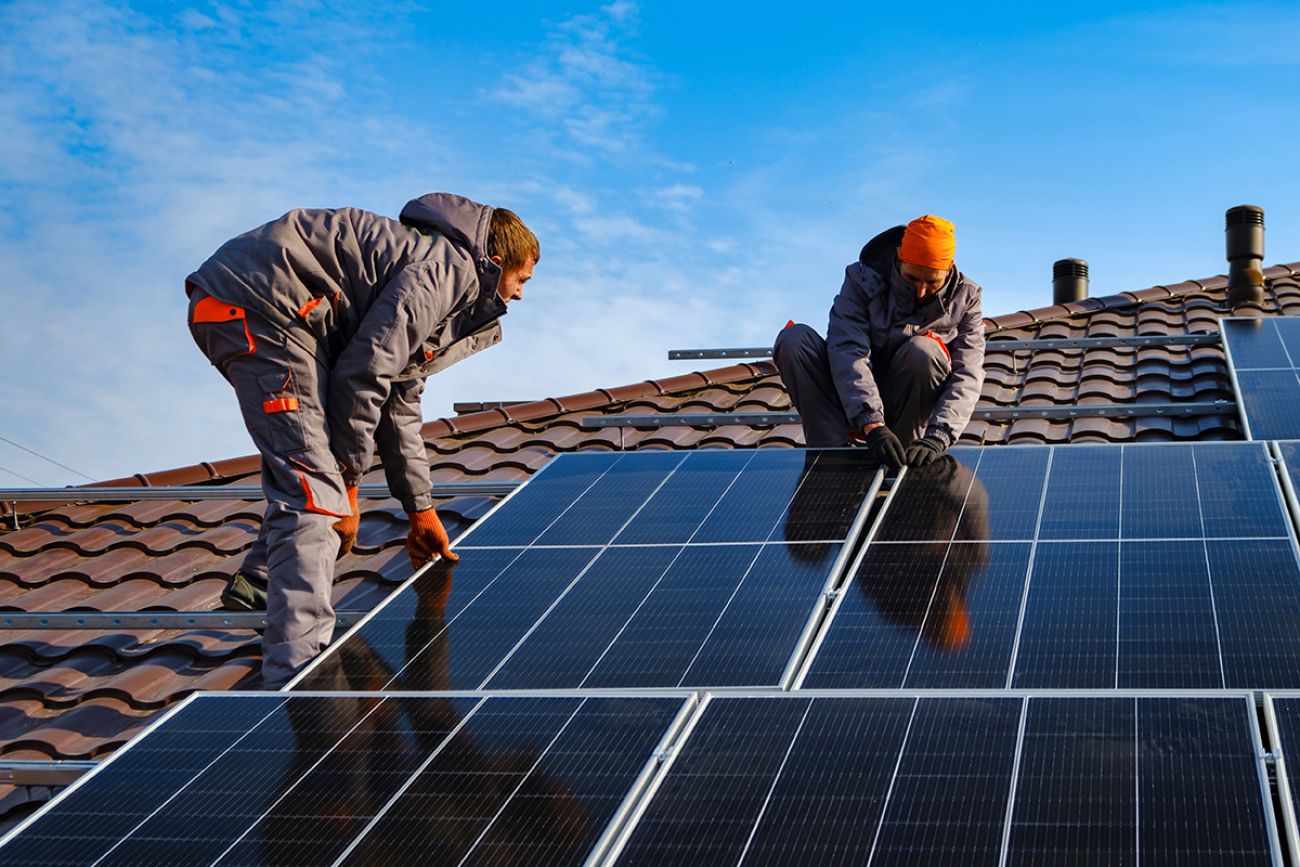Michigan nonprofits can benefit from ‘direct pay’ clean energy incentives

- The Inflation Reduction Act now gives nonprofits direct tax credits for up to 30 percent of clean energy installation costs
- New federal guidance will help nonprofits, houses of worship, municipal governments navigate the benefits
- The credit expansion means tax-exempt organizations will no longer have to employ complex workarounds to save money
These are boom times at Chart House Energy, a solar installation company based in Muskegon.
Business has increased five-fold over the past year and Rob Rafson, the company’s president and founder, said he plans to double or triple the number of workers.
The reason? Clean-energy incentives introduced and expanded through the Biden administration’s Inflation Reduction Act (IRA). Rafson said he expects a 10-percent increase in business overall once the policy is put into place administratively.
Related:
- Workers in short supply as U.S. invests $1.3 trillion in infrastructure repairs
- Dozens of violations, just $2,000 in fines for Detroit hazardous waste site
- Harmful algal blooms appearing on Lake Erie earlier than usual
Over in Lansing, Heather Shawa, chief financial officer for the Lansing Board of Water & Light, the state’s largest municipal power company, said the Inflation Reduction Act’s direct pay tax credit has the utility “very excited” about the future.
“This will allow us to be able to do (our strategic plan) with possibly less bond revenue issuance, and at the end of the day, our ratepayers will benefit on the affordability side,” Shawa said.
Direct pay is a policy started in the Obama-era American Recovery and Reinvestment Act of 2009 and expanded in the Inflation Reduction Act, the Biden administration’s flagship piece of legislation from 2022. The expansion provides, for the first time, big incentives for tax-exempt entities, like nonprofits, municipal governments, Tribes and houses of worship to invest in renewable energy, with a direct tax credit worth 30 percent of the cost of project installation.
The aim is to make it cheaper and easier for local governments and tax-exempt entities to install wind, community solar or, say, purchase a fleet of clean vehicles, leaving them more money for their communities or missions. In the first quarter of this year, the U.S. solar industry installed a record 6.1 gigawatts of solar capacity, a 47-percent increase over first quarter 2022, fueled in part by a surge in demand from the IRA, according to US Solar Market Insight, an industry report.
Chart House Energy, which does mostly commercial and industrial solar panel installation, is not a nonprofit. But about a third of its business comes from nonprofits or houses of worship looking to install a renewable energy project.
John Freeman, executive director of the Great Lakes Renewable Energy Association, a nonprofit which promotes renewable energy-friendly policy and use in Michigan, said that before passage of the Inflation Reduction Act, nonprofits had to employ elaborate workarounds to gain access to the tax credits offered by direct pay to private businesses.
Freeman said houses of worship would find wealthy members who would be willing to create a small business, which would then be tax liable. This small business would be run by the members, he said, and would purchase and install a solar array on the roof of the church and qualify for direct pay.
“The panels could literally still be on the church’s roof, but the church per se would not own the panels,” Freeman said. “It would be a couple of their congregants that are willing to do it. That was the workaround, but that was always clumsy.”
Eli Lieberman, director of clean energy financing for Michigan Saves, which promotes equitable access to clean energy, said nonprofits would typically enter into a “Purchase Power Agreement,” or PPA, with a third-party investor to take advantage of direct pay credits. The third party, typically a tax-equity investor, would purchase and install the solar array on the roof of the nonprofit. The nonprofit would then buy energy from that party. So, again, the nonprofits would own the property the array sits on, but not the array itself, which they found frustrating.
“They wanted to own a system,” Leiberman said. “It’s like part of their mission. They had this building, they had a roof, they wanted to put solar on it and they wanted to own the system, the PPA didn’t work for that purpose.”
With IRA expansion, tax-exempt entities are no longer required to find workarounds to benefit from direct pay. Lieberman called the expansion a “game-changer” and said nonprofits will be able to purchase and install a solar array and, when filing their I-990 tax form, the IRS will send back payment for the direct pay tax credit.
The U.S. Department of Treasury released guidance in June on the direct pay provisions. The guidance requires, at least temporarily, that qualifying entities follow a filing-process for registering a direct-pay-related project with the Internal Revenue Service prior to filing their tax forms.
Lieberman said he and the nonprofits had eagerly awaited the guidance, not wanting to install a project without it.
Matt Bach, the director of communications for the Michigan Municipal League, said in an email that because of how recently the law was signed into place, it is unlikely that many local governments have come to decisions on taking up the tax credit.
Freeman, of the Great Lakes Renewable Energy Association, said he anticipates municipal power companies may start more projects.
Diane Van Buren, founder of D2 Solar Detroit, which provides consulting and sale of solar panels in southeast Michigan, said municipal power companies now have “whole new leverage” along with the other incentives provided by the Inflation Reduction Act, which could increase the amount reimbursed by the IRS.
Shawa, of the Lansing Board of Water and Light, said the utility is pleased there is now an alternative to negotiating a PPA or installing at full price.
“Now we have a third option,” Shawa said. “Obviously ownership in our service territory is very attractive for us and it makes sense for our ratepayers as well.”
Michigan Environment Watch
Michigan Environment Watch examines how public policy, industry, and other factors interact with the state’s trove of natural resources.
- See full coverage
- Subscribe
- Share tips and questions with Bridge environment reporter Kelly House
Michigan Environment Watch is made possible by generous financial support from:
Our generous Environment Watch underwriters encourage Bridge Michigan readers to also support civic journalism by becoming Bridge members. Please consider joining today.
See what new members are saying about why they donated to Bridge Michigan:
- “In order for this information to be accurate and unbiased it must be underwritten by its readers, not by special interests.” - Larry S.
- “Not many other media sources report on the topics Bridge does.” - Susan B.
- “Your journalism is outstanding and rare these days.” - Mark S.
If you want to ensure the future of nonpartisan, nonprofit Michigan journalism, please become a member today. You, too, will be asked why you donated and maybe we'll feature your quote next time!






